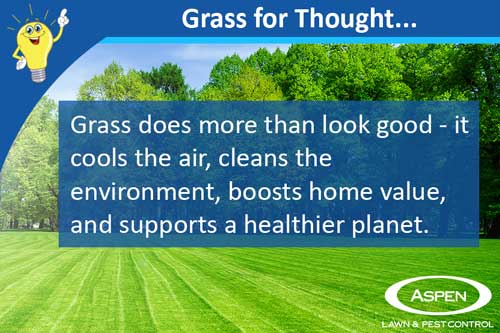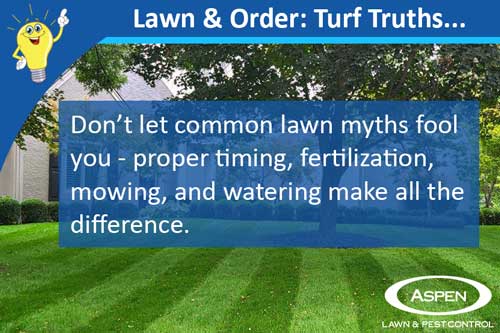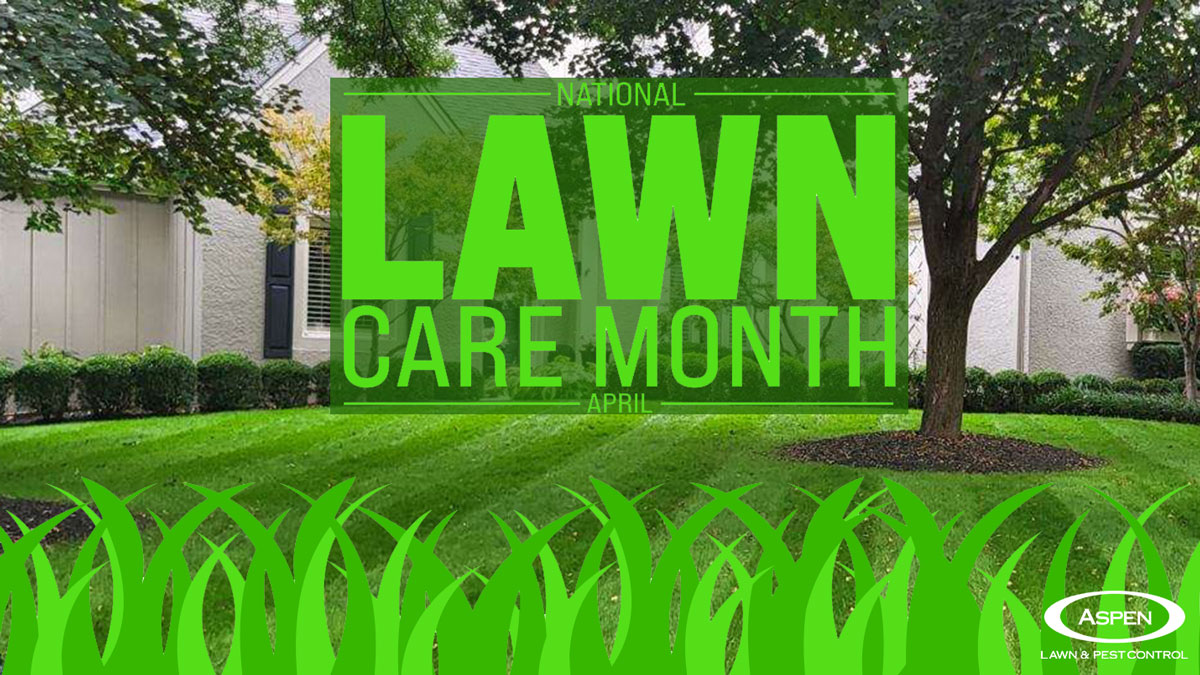April is National Lawn Care Month—a time to recognize and celebrate the vibrant green spaces that surround our homes and neighborhoods. More than just a suburban tradition, a healthy lawn represents beauty, environmental benefits, pride of ownership, and even increased property value. Let’s dig into why lawns matter, dispel a few myths, and share helpful tips to keep your lawn in top shape.
The Power of Grass: Interesting Lawn Facts
 A 50’ x 50’ lawn can produce enough oxygen for a family of four every day.
A 50’ x 50’ lawn can produce enough oxygen for a family of four every day.- Turfgrass helps trap over 12 million tons of dust and dirt annually in the U.S. alone.
- Lawns can be up to 30°F cooler than pavement, helping reduce ambient temperatures around your home.
- Grass plants have over 300 miles of fibrous roots per plant, making them highly efficient at absorbing water and filtering runoff.
- Lawns cover more than 40 million acres in the U.S.—that’s more than any single crop!
- A well-landscaped lawn can boost property value around 5% to 12%.
Lawn Myths vs. Facts
 Myth 1: You should water your lawn every day.
Myth 1: You should water your lawn every day.
Fact: Water deeply, but infrequently. Lawns typically need 1–1.5 inches of water per week, best delivered in two deep watering sessions early in the morning.
Myth 2: Cutting the grass shorter means mowing less often.
Fact: Cutting too short (“scalping”) weakens the grass and promotes weeds. Follow the one-third rule: never remove more than one-third of the grass blade in a single mowing.
Myth 3: Spring is the best time to seed your lawn.
Fact: Fall is usually the best time to seed cool-season grasses, as temperatures are more consistent and weed competition is lower.
Myth 4: Brown grass means it’s dead.
Fact: Brown grass in summer may simply be dormant, not dead. Most lawns recover once cooler, wetter weather returns.
Myth 5: All lawns need fertilizer in early spring.
Fact: Timing depends on your grass type. Cool-season grasses often benefit more from fall fertilization.
Tips for a Stronger, Healthier Lawn
- Test Your Soil: Know your pH and nutrient levels before fertilizing.
- Aerate Annually: Relieve soil compaction and improve water and nutrient uptake.
- Mow High: Keep most lawns between 2.5″ to 3.5″ for optimal root development and weed suppression.
- Use Pre-Emergents: Apply in early spring to stop crabgrass and other weeds before they sprout.
- Keep Mower Blades Sharp: Dull blades tear the grass, leading to stress and browning.
- Leave the Clippings: Grasscycling returns valuable nutrients to your lawn.
Americans Love Their Lawns
According to the National Association of Landscape Professionals:
- 81% of U.S. adults do some of their own lawn care.
- 69% believe their lawn could use improvement.
- 75% say it’s important to spend time in their yard.
- 44% hire professionals for at least some services.
These numbers show that lawns remain an important part of the American lifestyle.
Why Hire a Lawn Care Professional?
- Expertise: Professionals know the right products, timing, and practices for your region.
- Efficiency: Save time and avoid trial-and-error treatments.
- Long-Term Results: Consistent care leads to healthier, greener lawns and better curb appeal.
Celebrate National Lawn Care Month
Take time this April to appreciate and invest in your lawn. Whether you’re raking out winter debris, applying pre-emergents, or planning a fertilization schedule, every step you take brings you closer to a lush, vibrant yard. Lawn care is more than a task—it’s a tradition rooted in pride, value, and enjoyment.
Partner with Aspen Lawn & Pest Control
While National Lawn Care Month focuses on spring prep, a healthy lawn is a year-round effort. From proactive treatments in the spring to winter protection in the off-season, the pros at Aspen help ensure your yard stays vibrant in every season. Whether you need lawn fertilization, winter pest control, landscape maintenance, or tree and shrub protection, our expert team is ready to help.
Contact us today for a Free Estimate and let’s make sure your lawn is set up for success this spring and protected throughout the year.


Socials